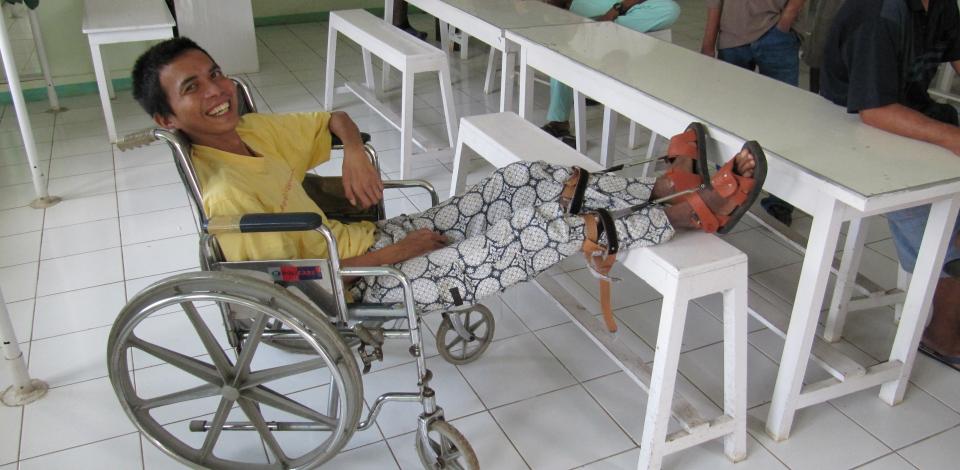
Introduction
There are multiple types of special footwear, depended on the potential to get injured, the injury or the deformity. People who have lost feeling in their feet as a result of nerve damage from leprosy or diabetes, are more prone to develop cuts or ulcers, as they are often unaware of objects inside the footwear or new foot injuries. Besides protective footwear with a thick outer sole, they need training in self-foot care. This training should focus on checking the feet and the inside of the footwear on a daily basis, and the practice of good skin and nail care. The people who already have injuries, ulcers or deformities, need custom-made and fit footwear or accommodative insoles that relief the pain, ease the pressure and improve walking.
For health workers it is important to recognize and select the appropriate footwear for an affected person. In some cases local, commercial footwear can be selected, whereas in the more difficult cases with unusually shaped toes/feet, custom-made insoles or footwear is required.
In remote areas, mobility is necessary to work in fields, walk to school/job or to collect water from the pump. NTDs can damage the feet, making walking painful and impossible. For the people in remote areas with a high prevalence of these NTDs, protective footwear is essential to reduce infections and injuries, and prevent deformity. Besides that, protective footwear means the difference between someone becoming self-sufficient or dropping further into poverty.
For which NTDs is this relevant?
Footwear is relevant to leprosy, Buruli ulcer, Guinea worm, soil-transmitted helminths, podoconiosis and lymphatic filariasis.

 Infolep
Infolep